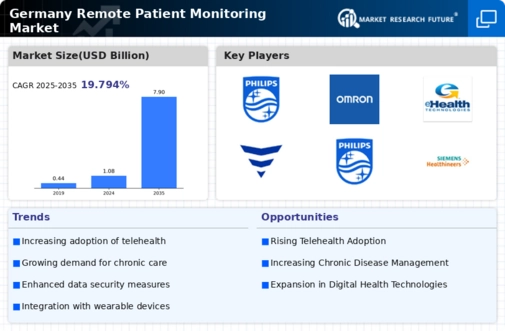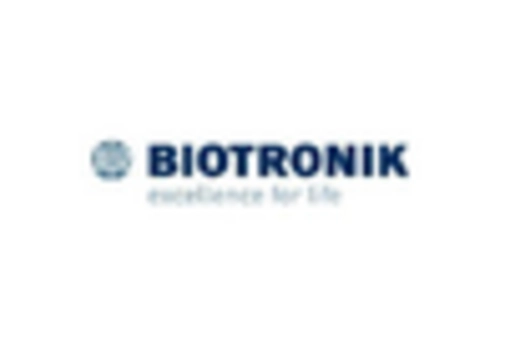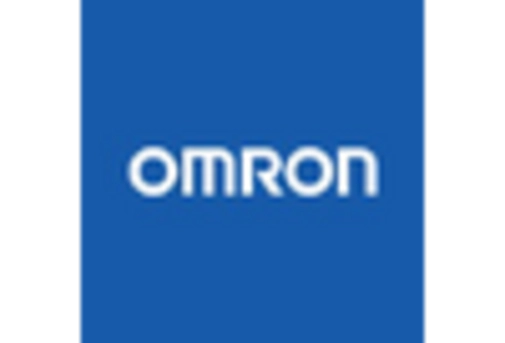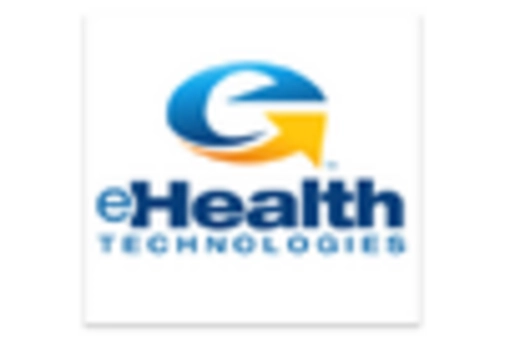Increased Focus on Preventive Healthcare
The remote patient-monitoring market is benefiting from a growing emphasis on preventive healthcare in Germany. This shift is characterized by a proactive approach to health management, where monitoring and early intervention are prioritized to prevent the onset of chronic diseases. The German government has been promoting initiatives aimed at enhancing preventive care, which aligns with the capabilities of remote monitoring technologies. By enabling continuous health tracking, these technologies facilitate timely interventions that can mitigate health risks. As a result, healthcare providers are increasingly adopting remote monitoring solutions to support preventive strategies, which is likely to bolster market growth in the coming years.
Enhanced Patient Engagement and Empowerment
Enhanced patient engagement and empowerment are emerging as critical drivers of the remote patient-monitoring market in Germany. Patients are increasingly seeking to take an active role in their healthcare, and remote monitoring technologies provide them with the tools to do so. By allowing patients to track their health metrics and communicate with healthcare providers in real-time, these technologies foster a sense of ownership over their health. Studies indicate that engaged patients are more likely to adhere to treatment plans, which can lead to improved health outcomes. This trend towards patient empowerment is likely to encourage healthcare providers to integrate remote monitoring solutions into their practices, thereby expanding the market.
Growing Demand for Home Healthcare Solutions
The remote patient-monitoring market in Germany is experiencing a notable surge in demand for home healthcare solutions. This trend is driven by an increasing preference among patients for receiving care in the comfort of their homes, which is perceived as more convenient and less stressful. According to recent data, approximately 30% of patients in Germany express a desire for remote monitoring options, indicating a shift in patient expectations. This growing demand is likely to encourage healthcare providers to adopt remote monitoring technologies, thereby expanding the market. Furthermore, the aging population in Germany, which is projected to reach 23 million individuals aged 65 and older by 2030, is expected to further fuel this trend, as older adults often require ongoing health monitoring and management.
Rising Healthcare Costs and Economic Pressures
Economic pressures and rising healthcare costs are compelling stakeholders in Germany to explore more cost-effective solutions, thereby driving the remote patient-monitoring market. With healthcare expenditures projected to reach €500 billion by 2025, there is an urgent need for innovative approaches to reduce costs while maintaining quality care. Remote monitoring technologies can potentially lower hospital readmission rates and decrease the need for in-person visits, which can be financially burdensome for both patients and providers. This economic rationale is likely to encourage healthcare systems to invest in remote monitoring solutions, thereby fostering market growth. Additionally, the potential for remote monitoring to improve patient adherence to treatment plans may further contribute to cost savings.
Integration of Artificial Intelligence in Healthcare
The integration of artificial intelligence (AI) into the remote patient-monitoring market is emerging as a pivotal driver in Germany. AI technologies are being utilized to enhance data analysis, enabling healthcare providers to make more informed decisions based on real-time patient data. This capability is particularly beneficial in managing chronic diseases, where timely interventions can significantly improve patient outcomes. Reports suggest that the use of AI in healthcare could potentially reduce operational costs by up to 20%, making it an attractive option for healthcare facilities. As AI continues to evolve, its application in remote monitoring is likely to expand, leading to more personalized and efficient patient care solutions.





















Leave a Comment